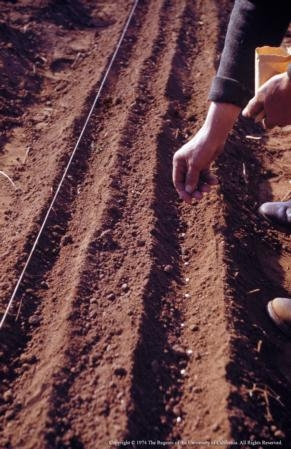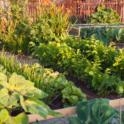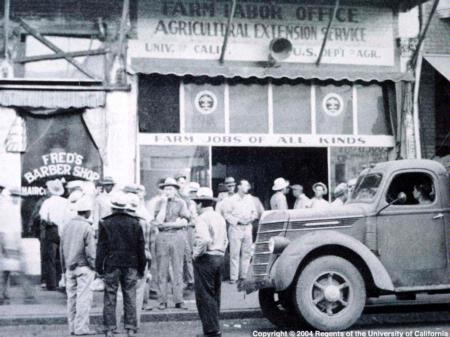
Posts Tagged: Victory Gardens
UCCE Advisor Visits White House Garden
UC Ventura County Cooperative Extension youth, family and community development advisor Rose Hayden-Smith toured the White House garden on October 19 as part of the White House Social Fall Garden Tour. There she was able to explore Michelle Obama's kitchen garden and get a sighting of the President who waved to them as he strolled through the area with the family dog.Rose leads a statewide initiative for sustainable food systems and has a passionate interest in promoting community and victory gardens. It is no surprise that she won a Twitter contest prize invitation to the tour by expressing within the website's 140 character limit format why she wanted to visit the White House garden.
This was Rose's second visit to the White House gardens. After the tour, the group spent several hours with White House staff learning more about the administration's food and health initiatives. The stay included touring urban garden projects in Washington D.C. with UC ANR advisor Rachel Surls from the UC Los Angeles extension office.
The social is a part of the Fall Garden Tours in October where invitees and members of the public can view the kitchen garden, Jacqueline Kennedy Garden, Rose Garden and South Lawn of the White House.
For more information, please follow the links to view the brochure or check out the White House Blog.
A History of American Agriculture
USDA’s Growing A Nation: The Story of America Agriculture is an amazing resource.
In addition to general timelines and statistical information from the 1700’s through 2000, there is an assortment of videos and audio clips including:
- The More Milk for More Children promotion, produced in 1954
- Secretary of Agriculture Orville Freeman addresses the issue of hunger and raises questions in 1968
- A 1916 silent film depicting the process from wool to cloth
- Food to Win the War, produced in 1941
- And much more
In hard times Americans have always turned to gardening
Gardens enable people to improve their food security. Plus gardens have many other benefits.
The Victory Gardens of World War I and World War II - and the garden efforts of the Great Depression - helped Americans increase home and community food security. In addition to helping the family budget and improving nutrition, these gardens helped to save fuel by reducing transportation; provided natural beauty in communities; empowered every citizen to contribute to a national effort; and bridged social, ethnic, class, age and cultural differences during times when cooperation was vital.
We are in the midst of a new cycle of a garden movement. While there are many reasons people are gardening today, there is a growing demand for food that is tasty, nutritious, and economically and environmentally sustainable.
The current resurgence in home and community gardens is similar to previous calls to garden in our country. Using gardens and the food that comes from them, we can profoundly change our lives and our communities. Gardening empowers eaters to take an active role in producing their own food. This simple act can improve nutrition; teach youth about science; reduce health care costs; regenerate the economy; preserve natural resources; strengthen national security; build resilient communities; and nourish future generations.
Gardening offers many opportunities to improve one’s life by providing outdoor exercise, and excellent nutrition with home-grown fruits and vegetables. Working outside at home makes it easier to meet and greet neighbors – or make new friends at a community garden. But perhaps most importantly, during these uncertain economic times, gardening can help people be more self-sufficient.

Victory Gardens to Urban Agriculture
On Wednesday, April 13 Rose Hayden-Smith will give a talk at UC Santa Barbara’s Interdisciplinary Humanities Center (IHC). The title of Dr. Hayden-Smith’s lecture is From Victory Gardens to Urban Agriculture: Join the Garden Revolution.
From the IHC site:
“Hayden-Smith will present an in-depth look at the past and present of the Victory Garden movement. This paper will review historical case studies and discuss current national policies and models as well as future work needed to sustain the Victory Garden model as part of the overall local food movement. Hayden-Smith will also discuss urban agriculture and how the local food-systems movement is addressing a wide range of challenges facing Americans today. A graduate of UCSB, Hayden-Smith is the Strategic Initiative Leader for Sustainable Food Systems for UC’s Agriculture and Natural Resources Division.”
There is no cost to attend. Further details can be found here.
Garden to victory
The current resurgence in home and community gardens is similar to previous calls to garden in our country – most notably the victory garden movements of WWI and WWII. Using gardens and the food that comes from them, we can profoundly change our lives and our communities.
Both World War victory garden movements were extremely successful. The goals for WWI were covered in a previous post . While there were similar goals for WWII, some additional goals included:
- Improving health by gardening
- Proper storage and preservation of surplus
- Enabling families and institutions to save money on vegetables, so the money could be used for other necessities
- Gardens for urban dwellers
- Mobilizing and unifying Americans.
And as it had been in 1917, the American people pitched in together and went to work. The early 1940’s were also years of great food production by everyday people.
We are in the midst of a new cycle of a garden movement. While there are many reasons people are gardening today, there is a growing demand for food that is tasty, nutritious, and economically and environmentally sustainable. In 2009, there were 4 million new gardeners nationwide. We are even happier to report that the enthusiasm and planting continues!
To learn more, please see our previous posts on Victory Gardens and or contact our office .






